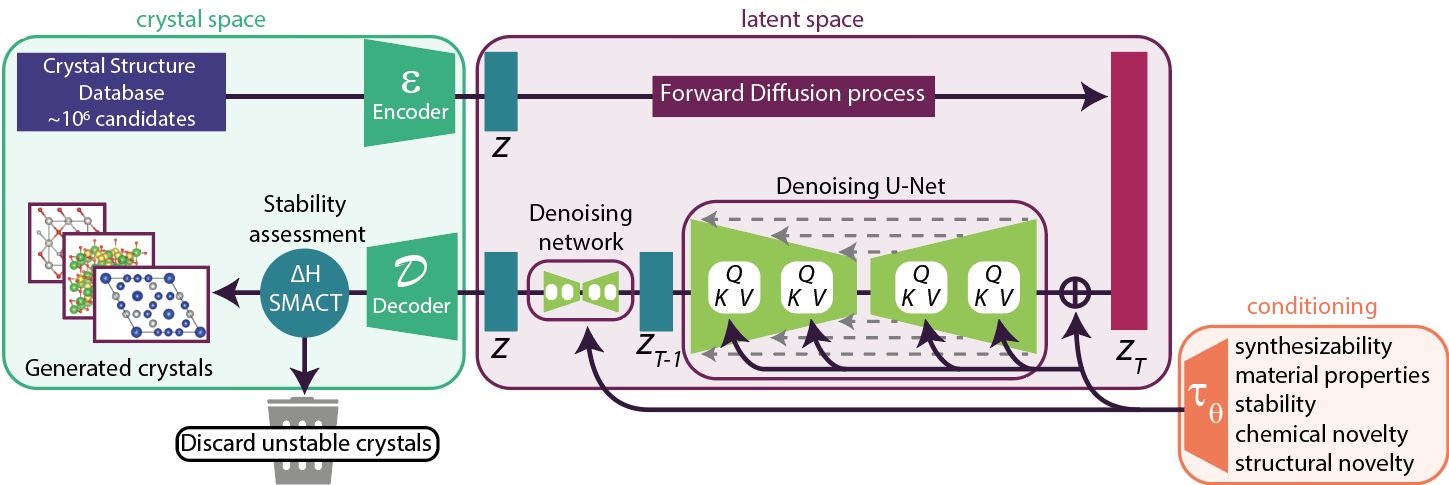Crystal structure prediction has long fascinated scientists. There has been intense investigation over the last century ranging from simplistic rules to data-driven predictions and, most recently, generative artificial intelligence tools developed by academics and now deployed at scale by private companies like DeepMind. The author describes the timeline of crystal structure prediction and how machine learning has supplemented and, in some cases, replaced traditional approaches. The video article compares generative models including variational autoencoders, generative adversarial networks, and diffusion models and describes new efforts to condition these models to achieve inverse design of new crystal structures. Specific examples of xtal2png and CrysTens representations were given.




This work was supported by the National Science Foundation under grant no. DMR-1651668 and DMR-1950589. The work was also supported by the Army Research Office Materials Design program under contract number #W911NF-23-1-0333.
1. A. Merchant, S. Batzner, S.S. Schoenholz, M. Aykol, G. Cheon, and E.D. Cubuk, Scaling deep learning for materials discovery, Nature 624, 80 (2023).
2. H. Park, Z.Z. Li, and A. Walsh, Has generative artificial intelligence solved inverse materials design?, Matter 7, 2355 (2024).
3. M. Alverson, S.G. Baird, R. Murdock, (Enoch) Sin-Hang Ho, J. Johnson, and T.D. Sparks, Generative adversarial networks and diffusion models in material discovery, Digital Discovery 3, 62 (2023).
4. B. Sanchez-Lengeling, E. Reif, A. Pearce, and A.B. Wiltschko, A gentle introduction to graph neural networks, Distill 6 (2021).
5. L. Rajput, R. Santra, and K. Biradha, Crystal engineering studies on ionic crystals of pyridine and carboxylic acid derivatives containing amide functional groups, Aust. J. Chem. 63, 578 (2010).
6. D.M. Anstine and O. Isayev, Generative models as an emerging paradigm in the chemical sciences, J. Am. Chem. Soc. 145, 8736 (2023).
7. L.M. Antunes, K.T. Butler, and R. Grau-Crespo, Crystal structure generation with autoregressive large language modeling, arXiv:2307.04340 (2023).


